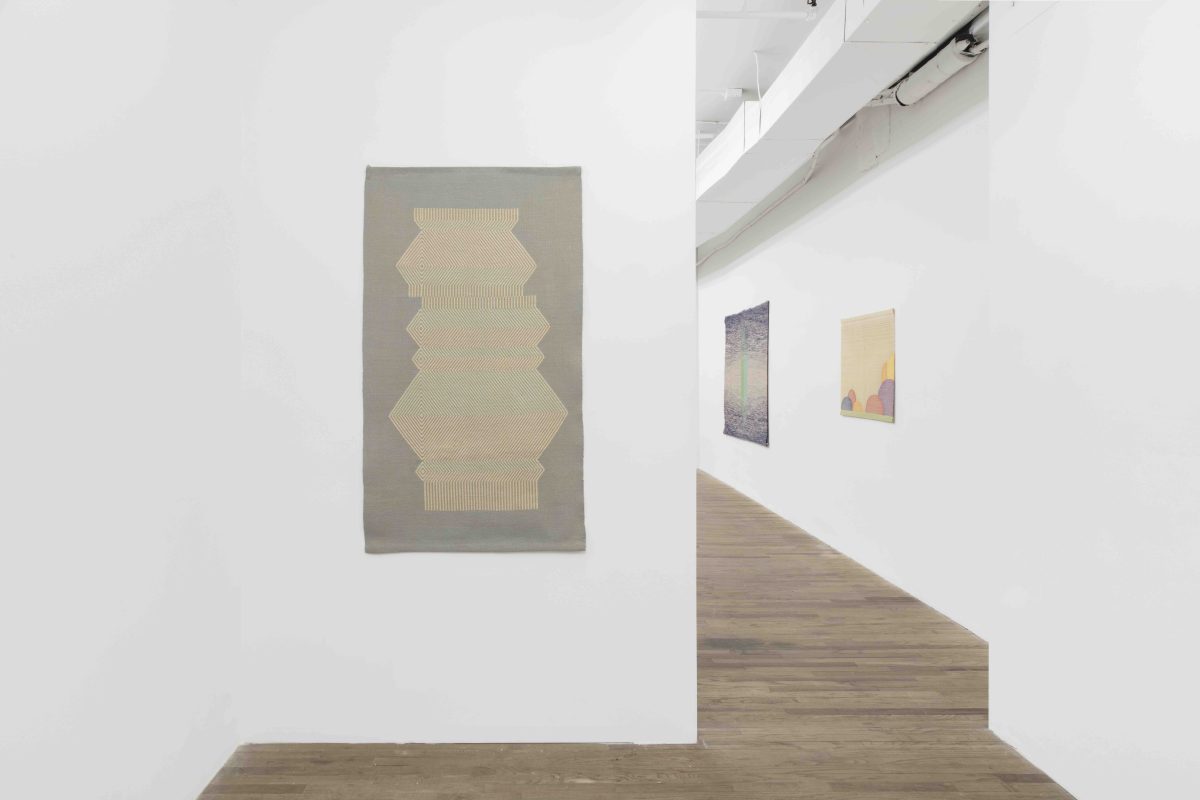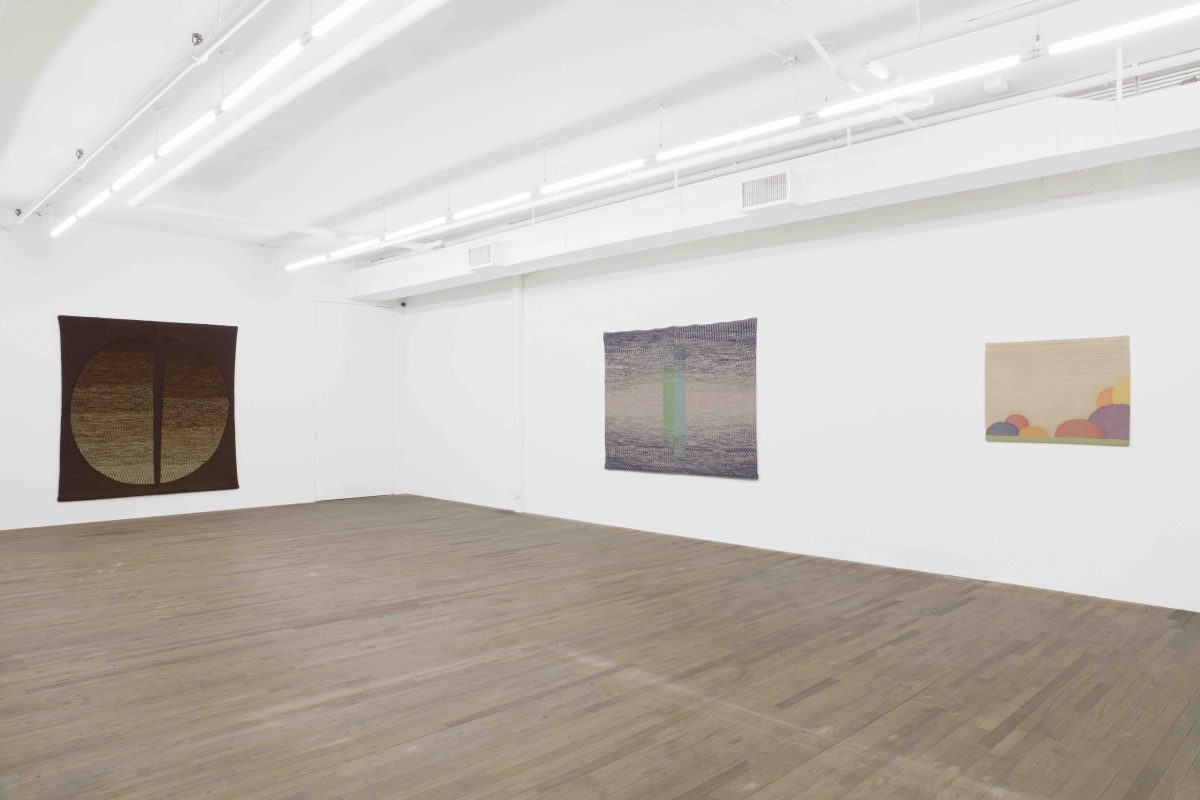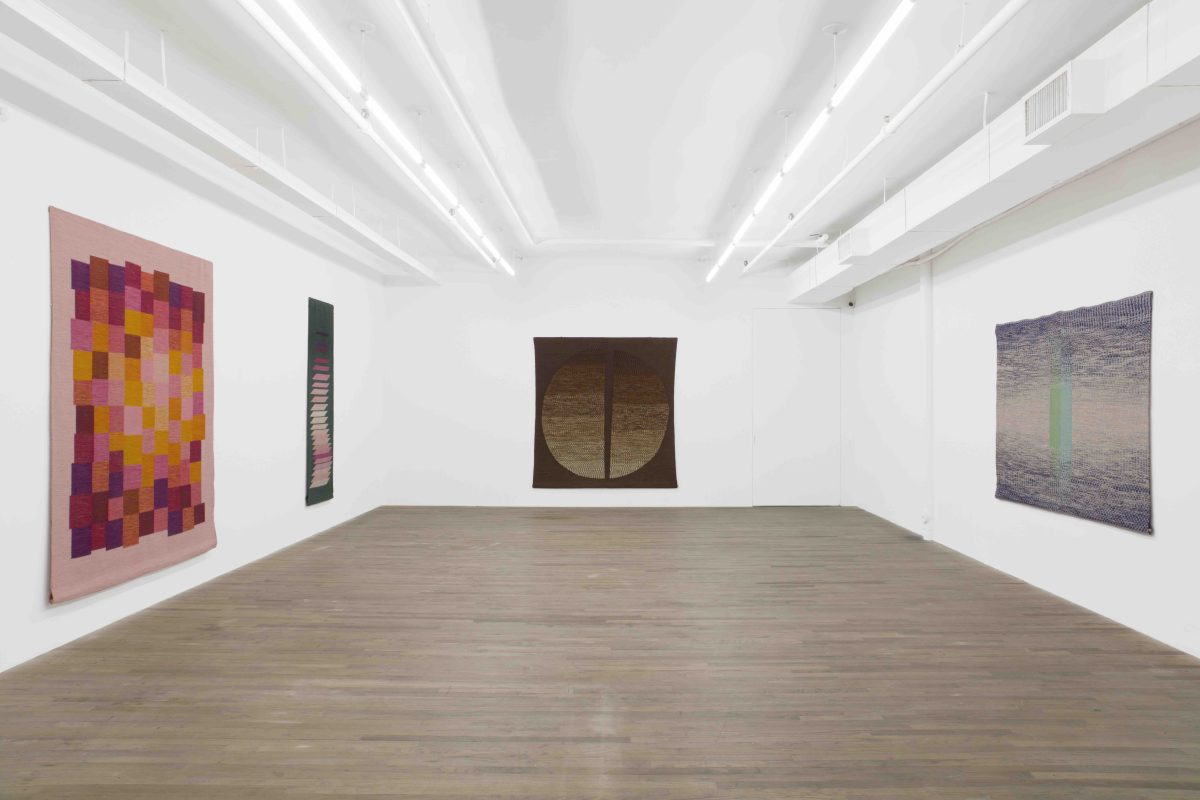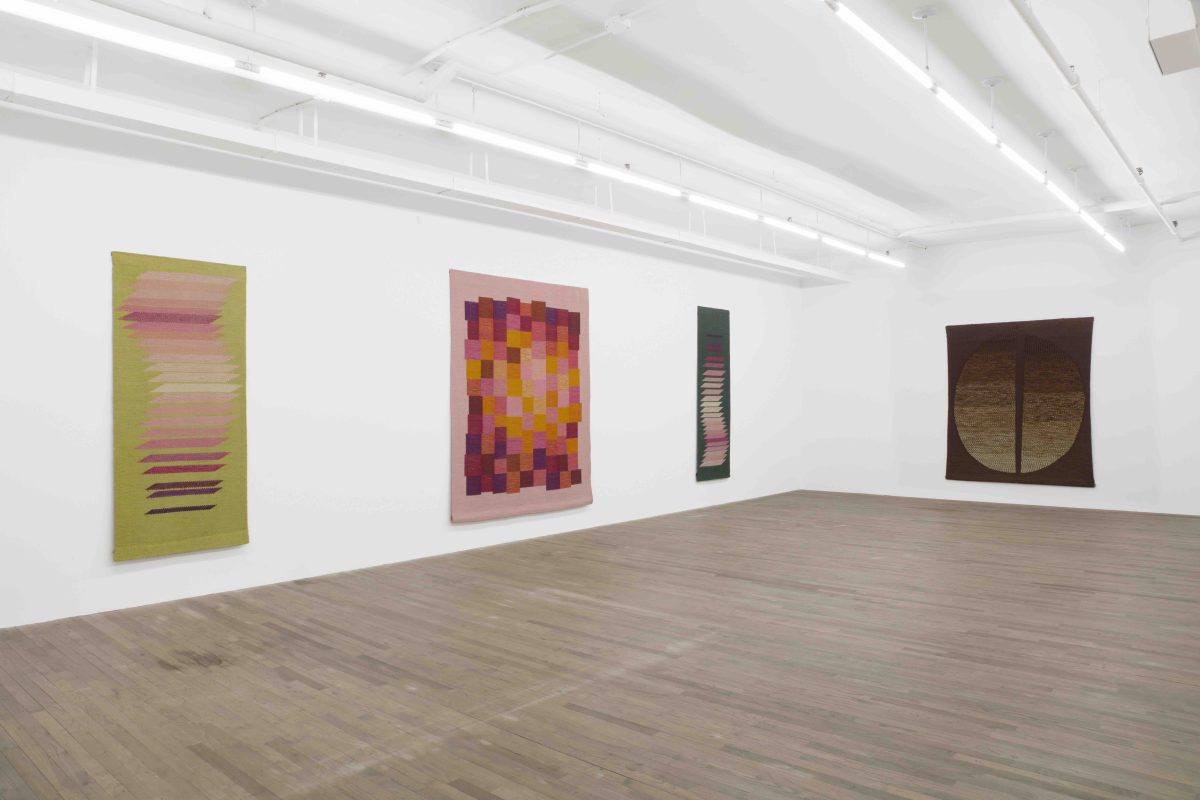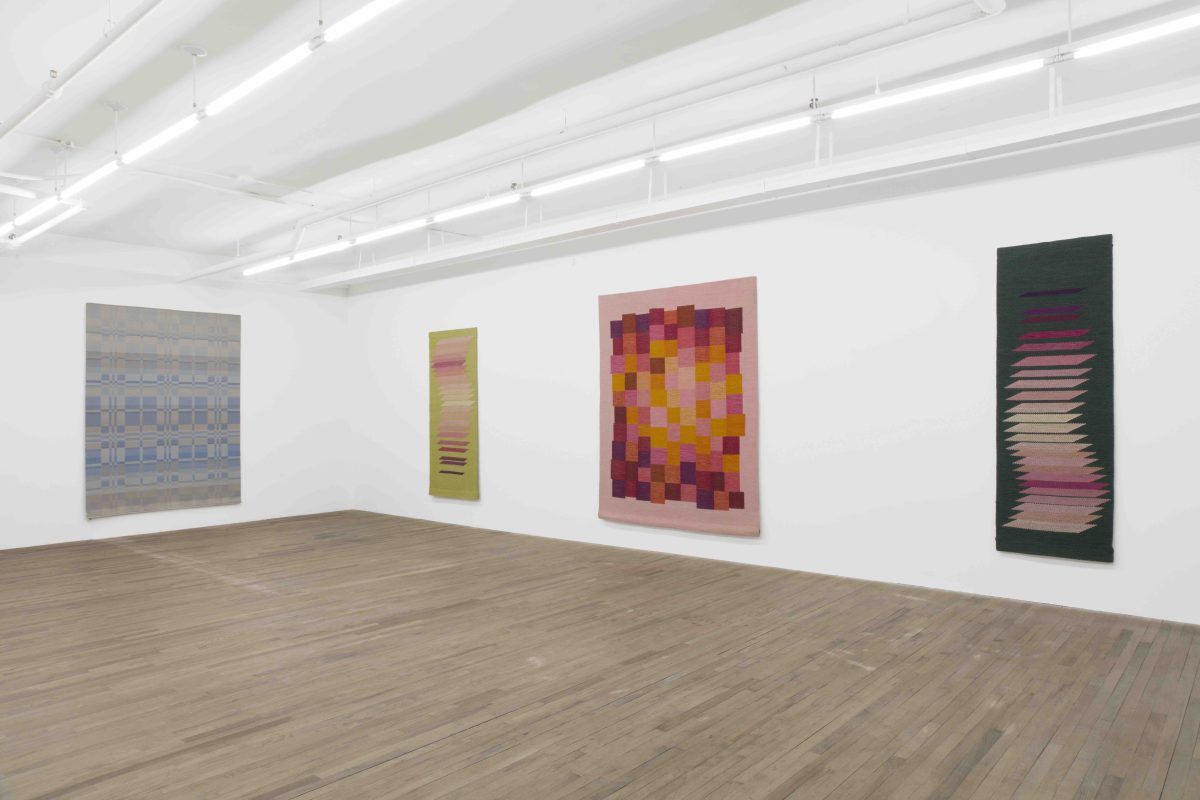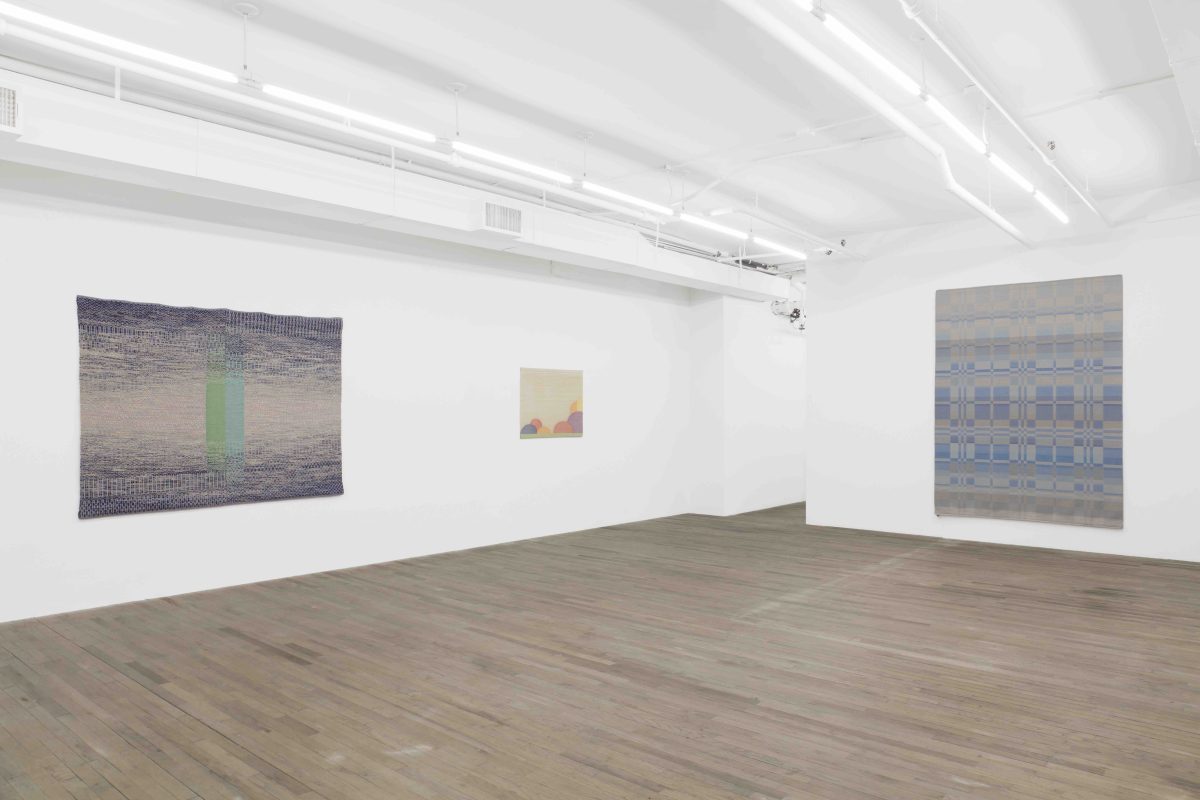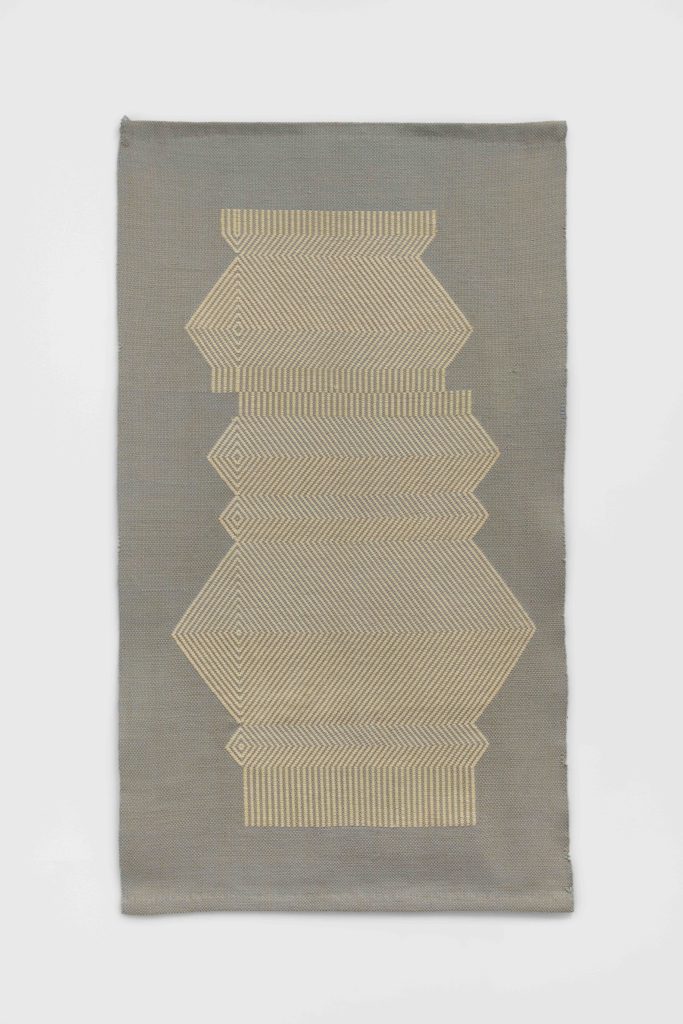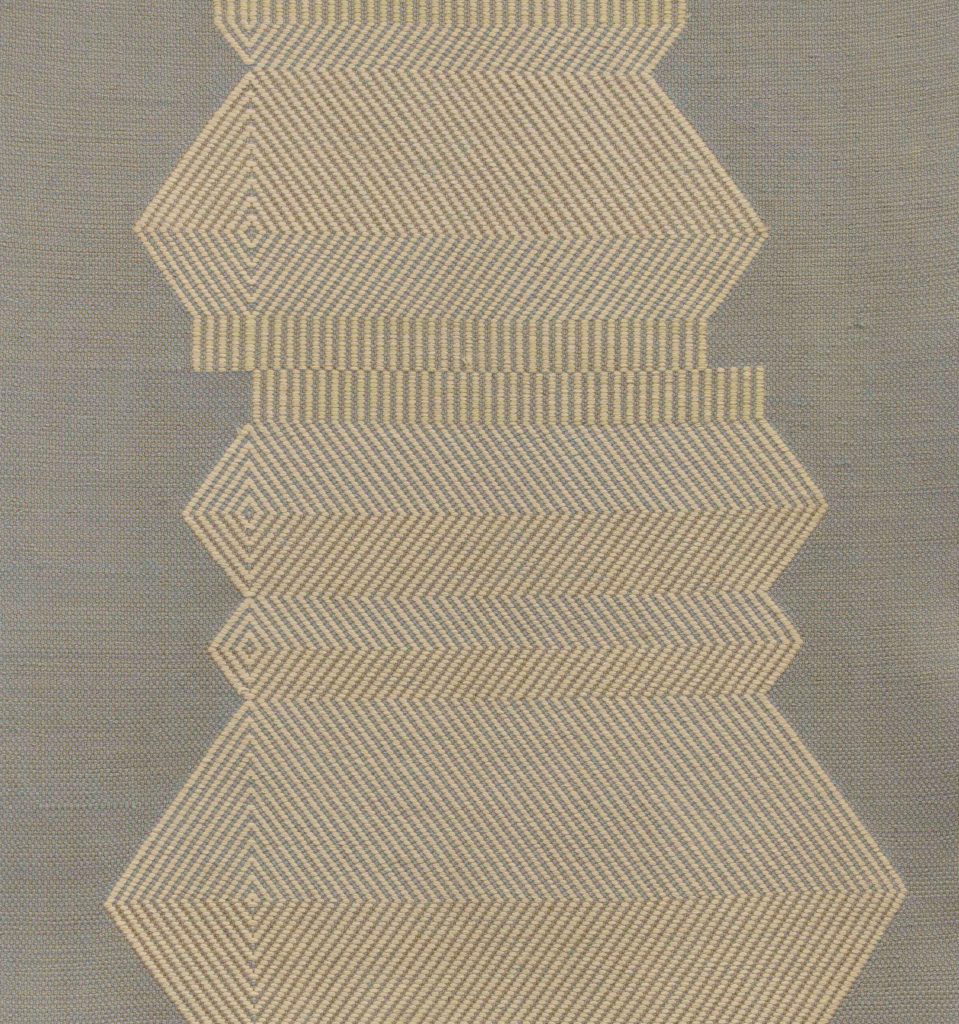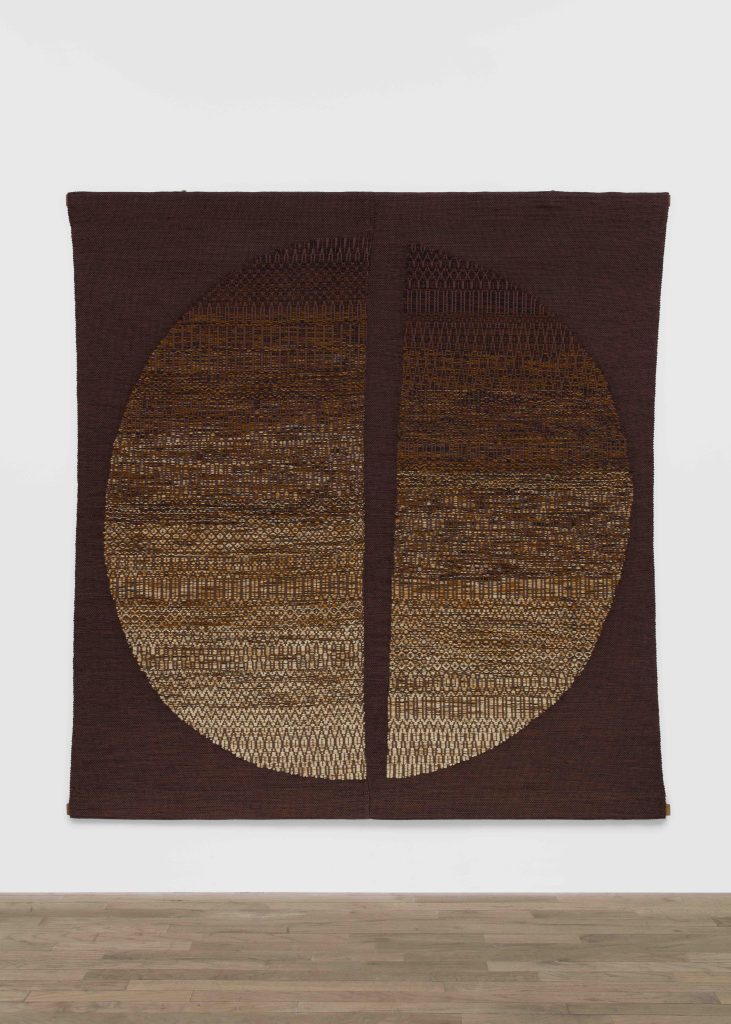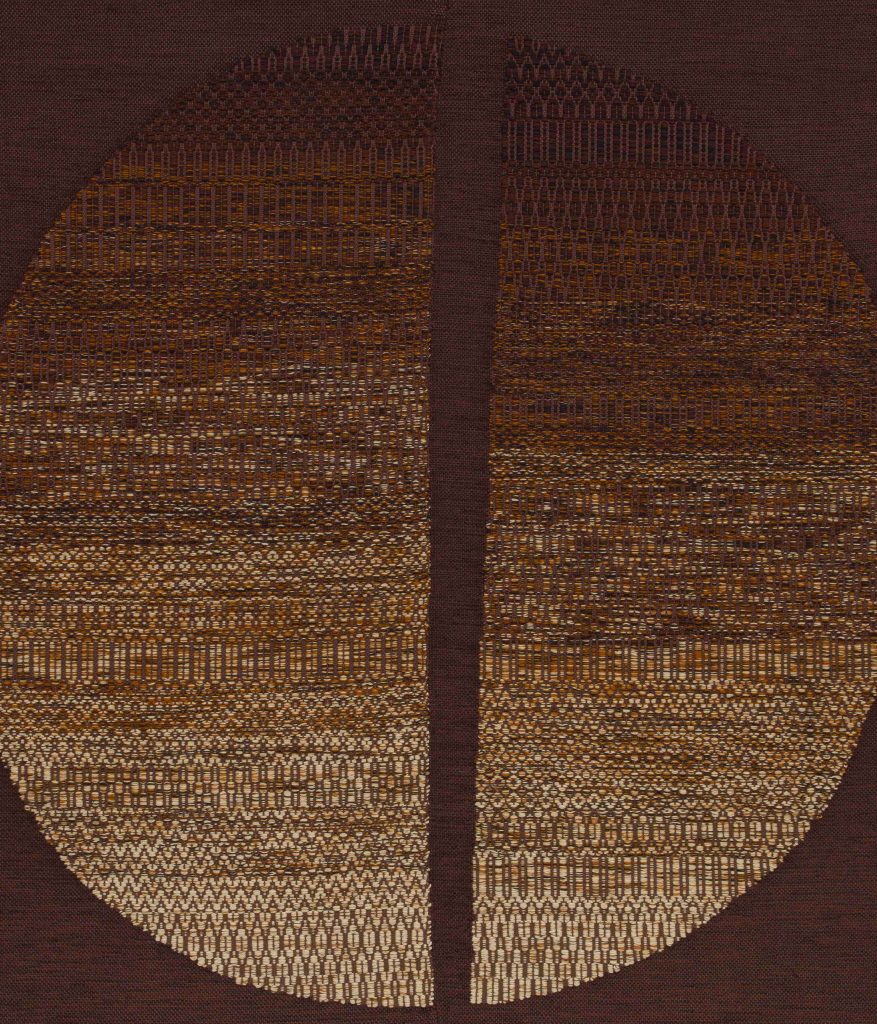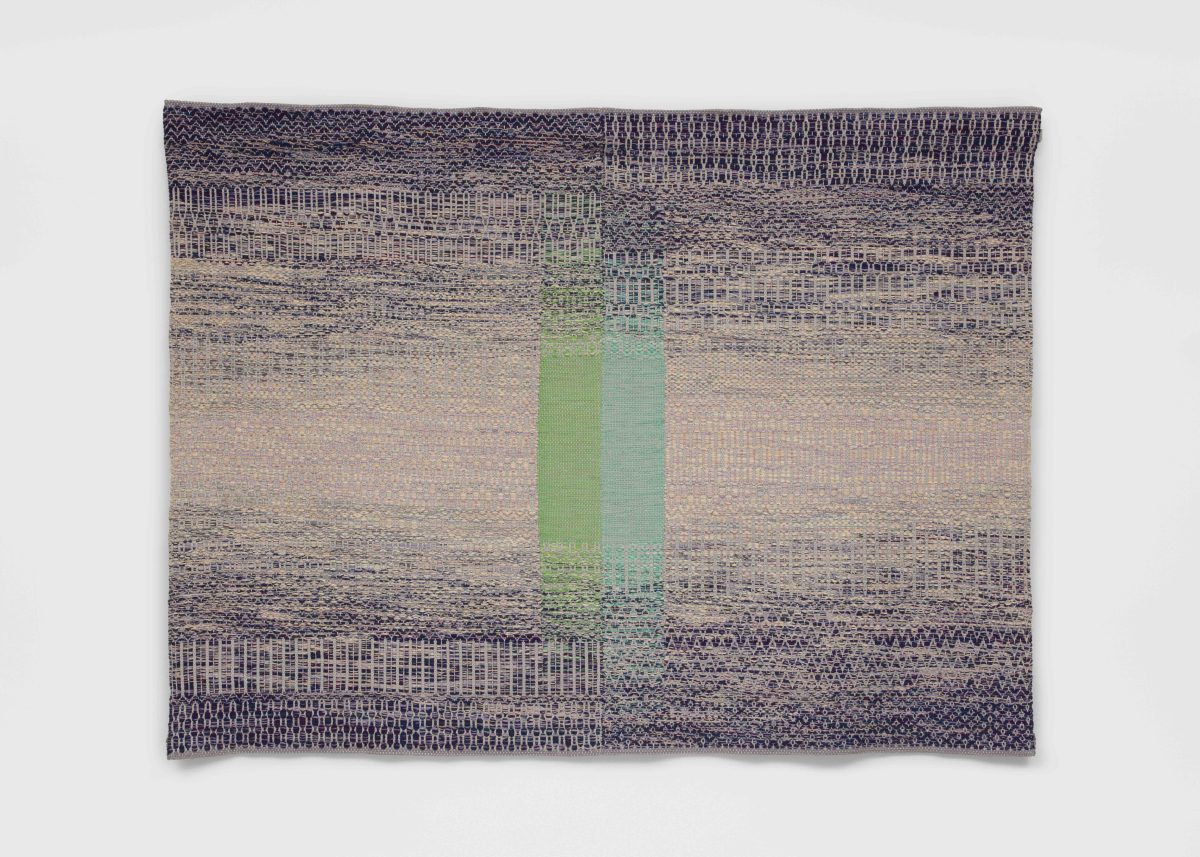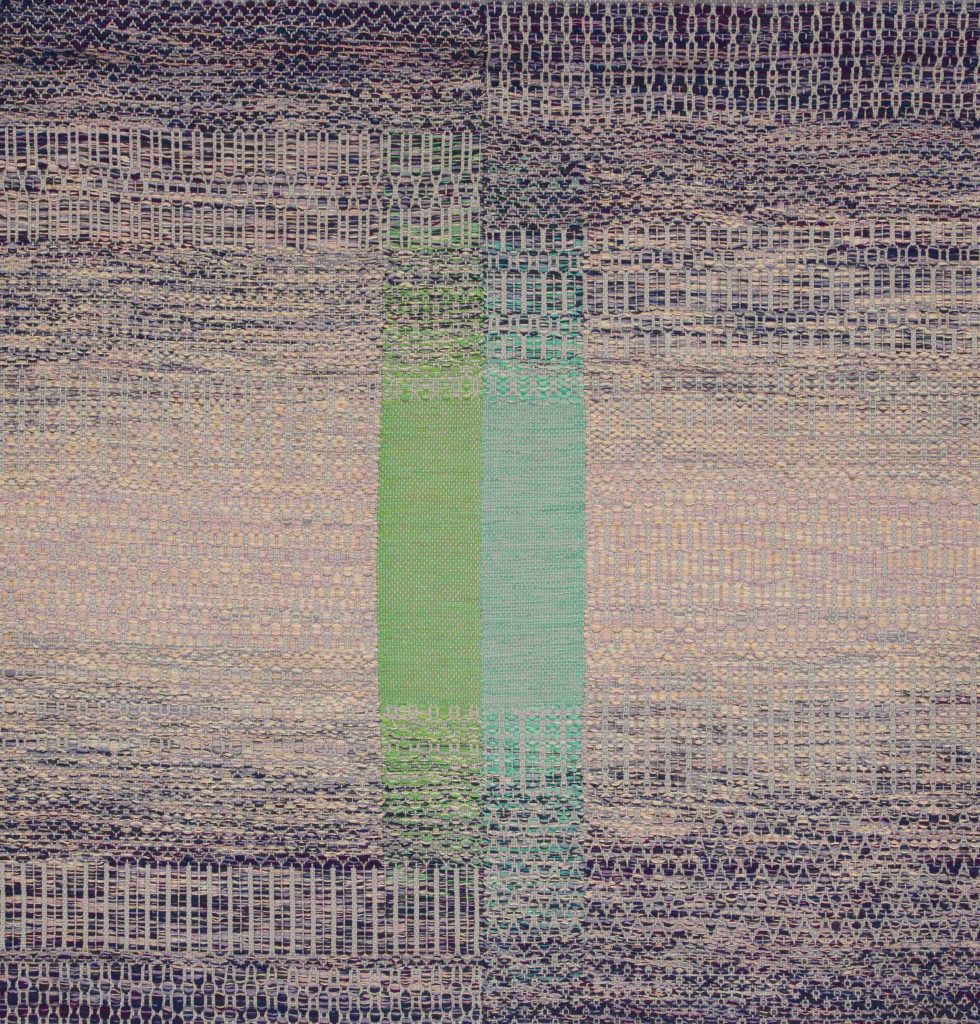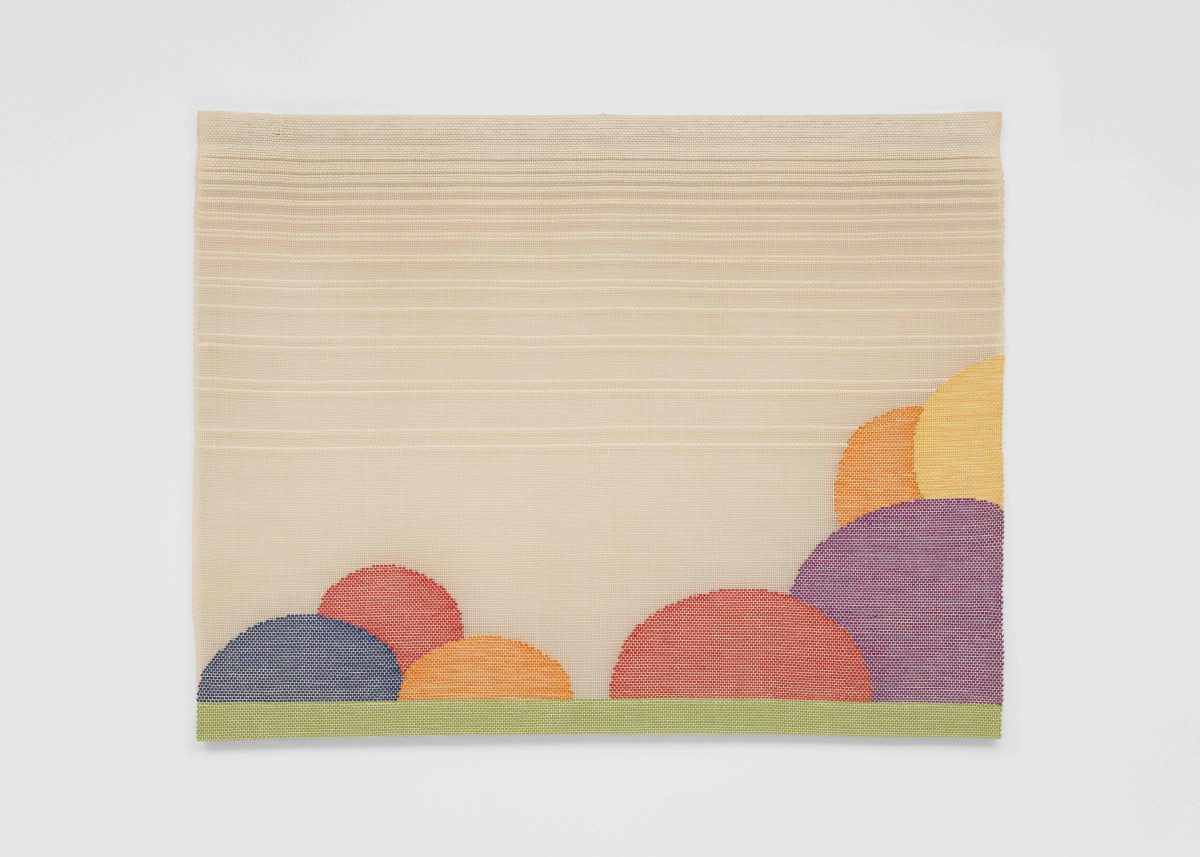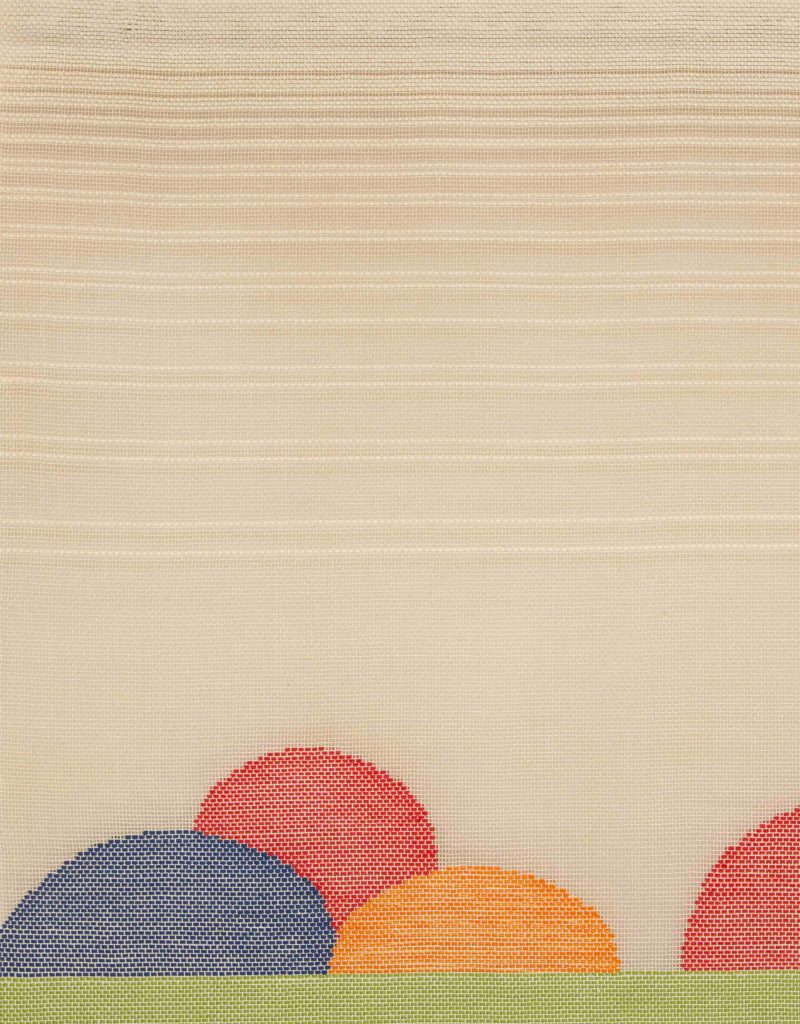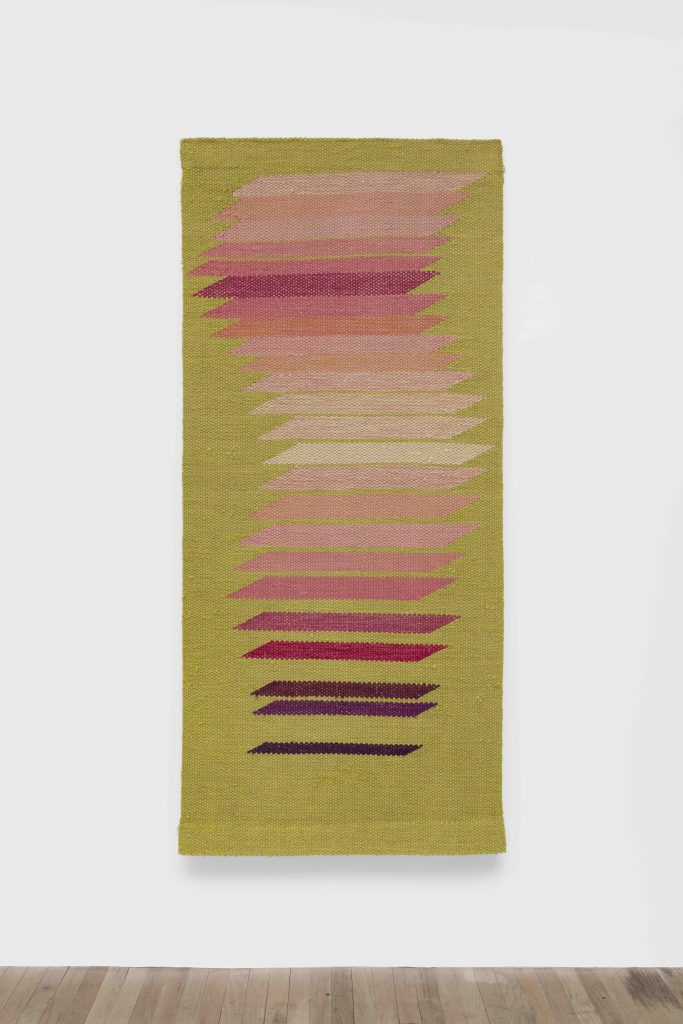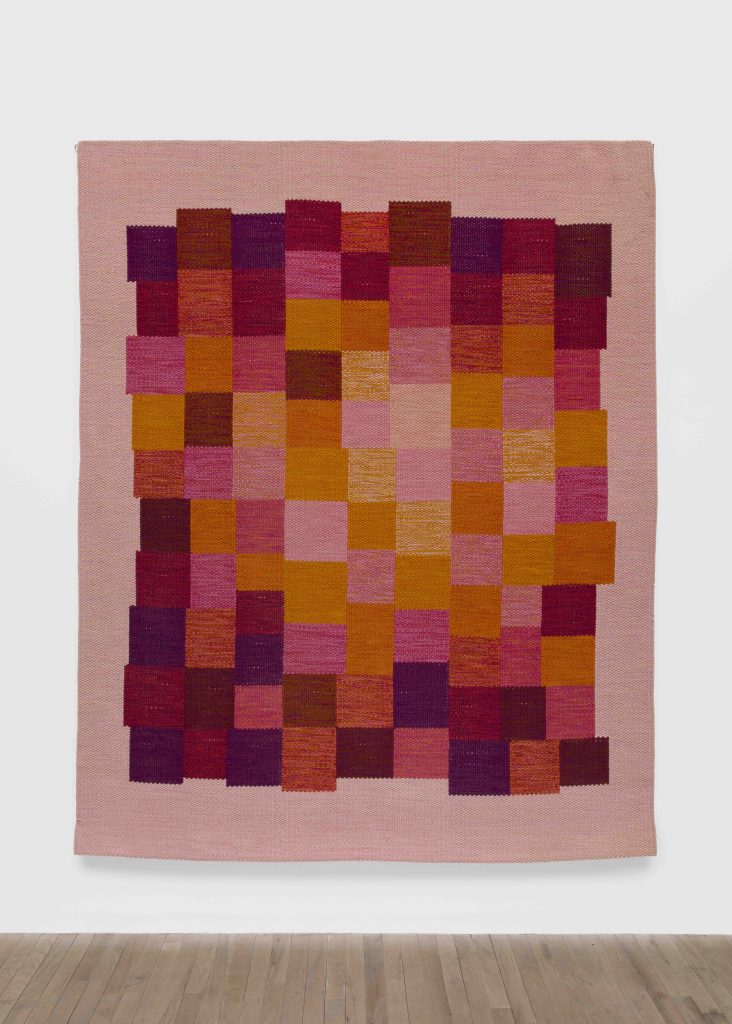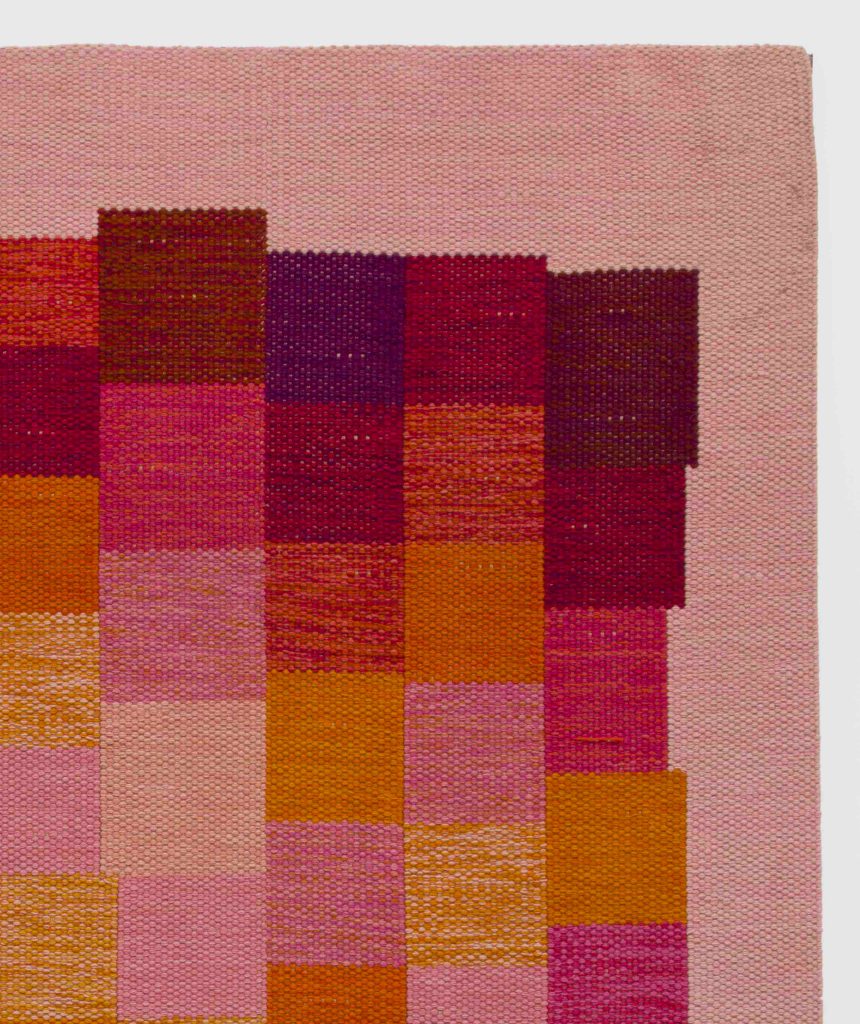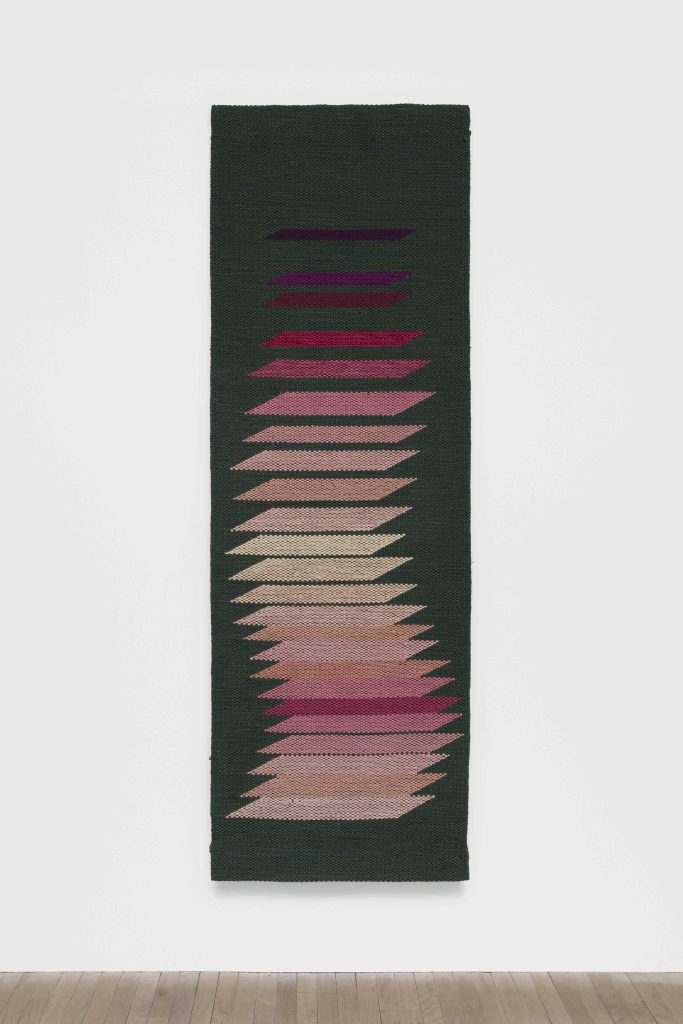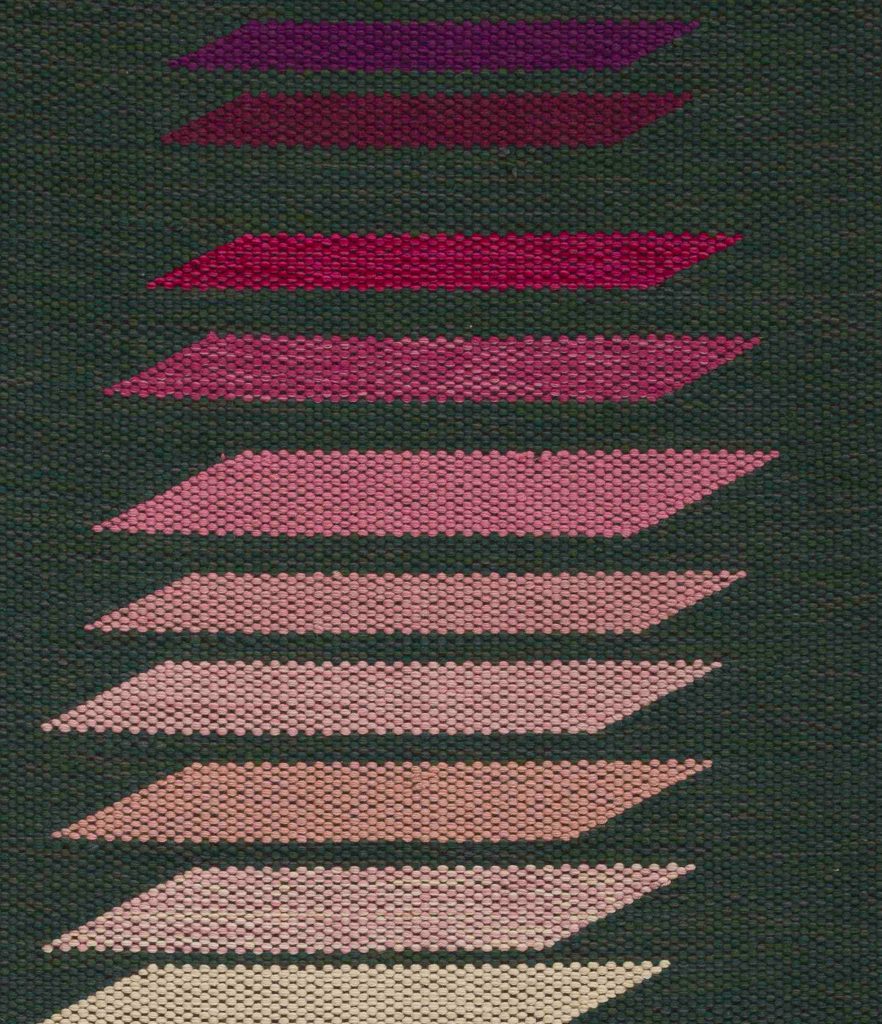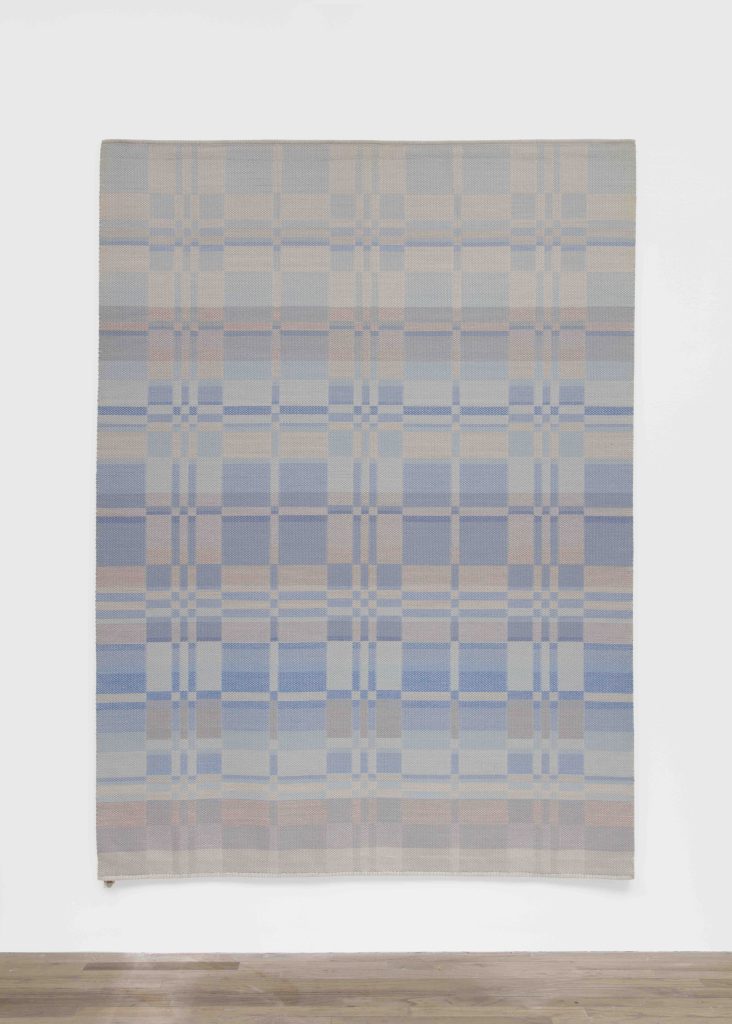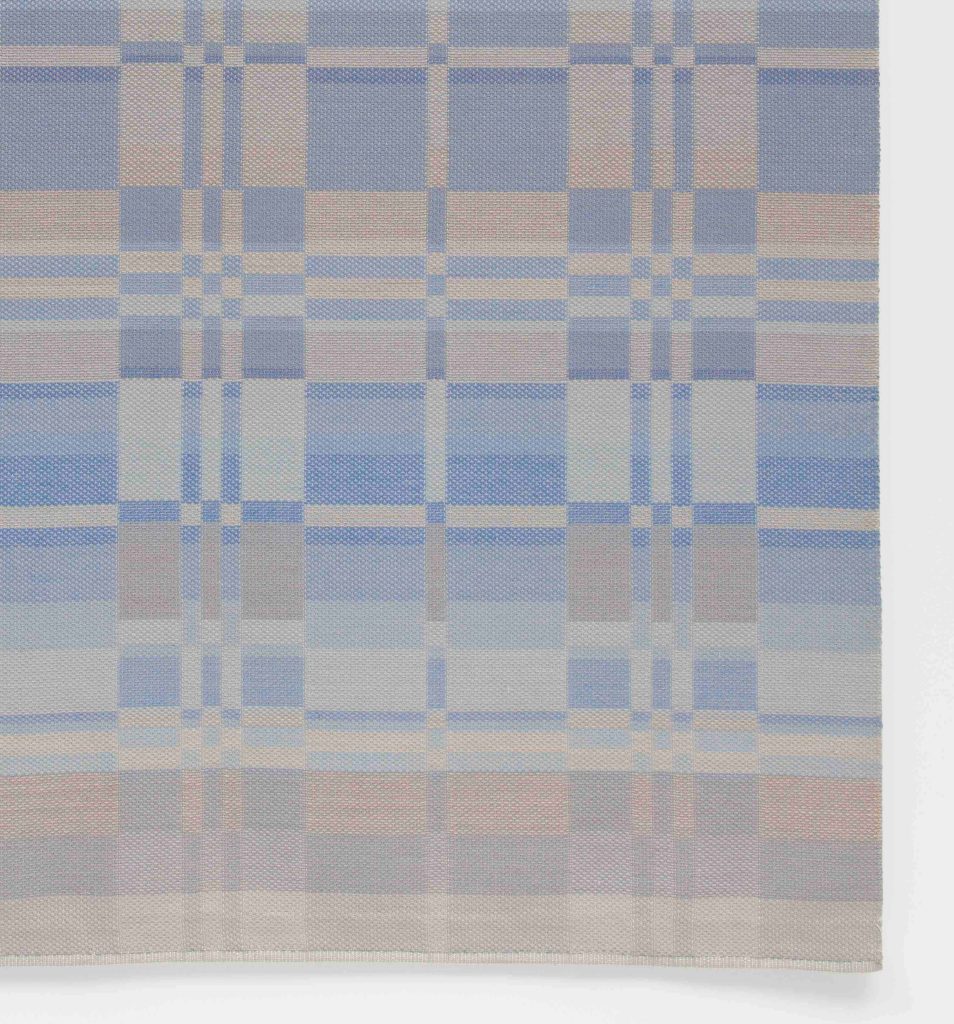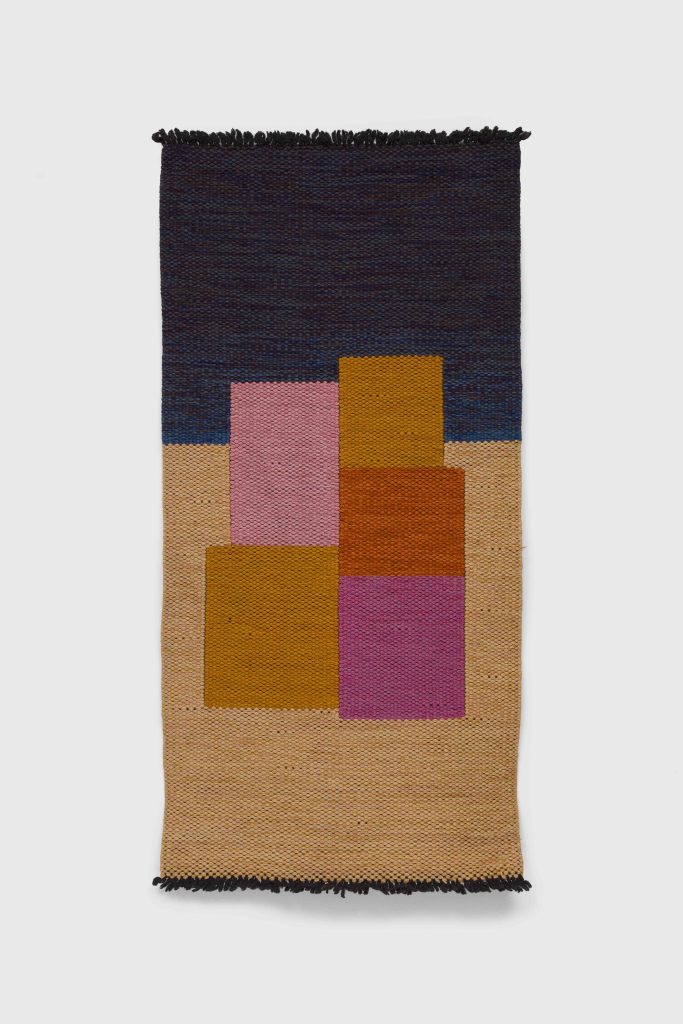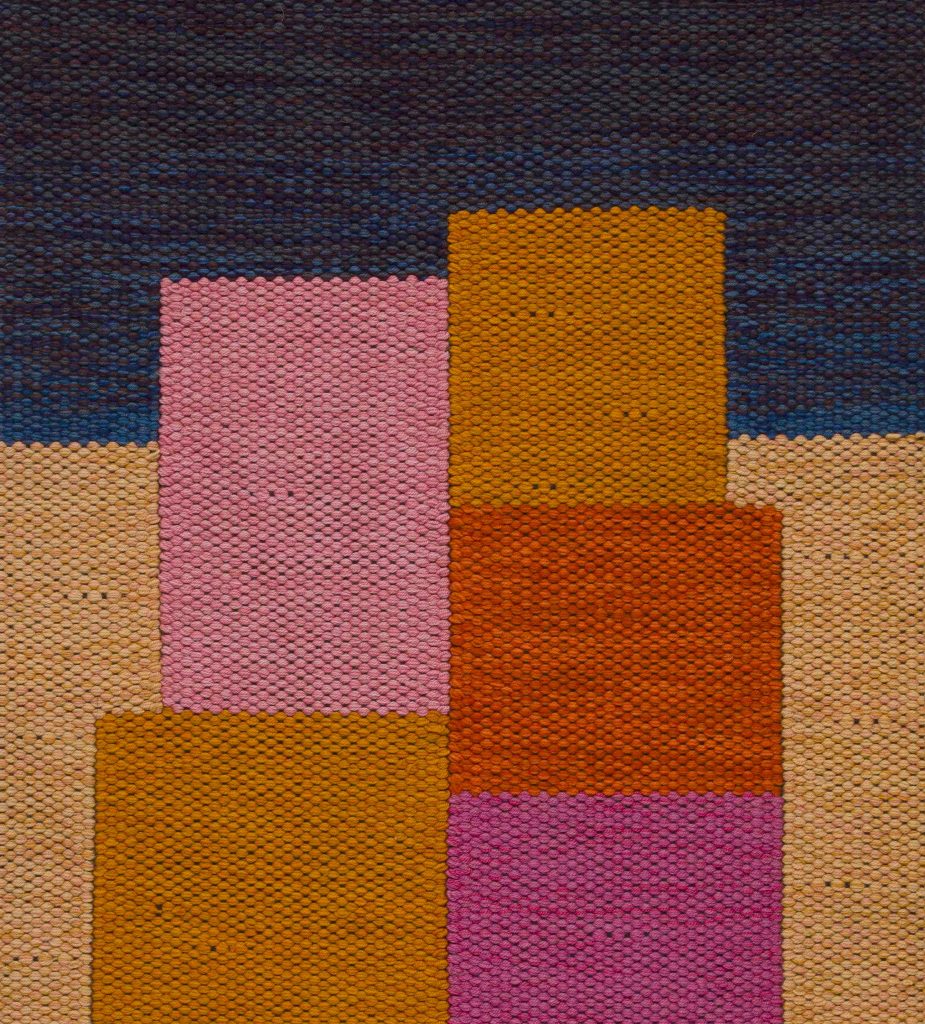
- This event has passed.
kaufmann repetto is pleased to present Renata Bonfanti: The Art of Weaving (selected works from 1968-2009), a solo exhibition of textile works by the late Italian designer, Renata Bonfanti.
Bonfanti is often referred to as an all-encompassing “Art-weaver”, as she moved effortlessly from one design to the next, continuously creating hand-woven, knotted and later mechanically loomed works that blurred the lines between craftsmanship, design and art. Traditional weaving, contextual connection and interpersonal collaboration are all considered to be part of the multi-tiered cruxes within Bonfanti’s practice.
After World War II, weaving and textile work in Italy was stigmatized as “woman’s work”. Unwilling to fall into the bottomless trap of feminal value, Bonfanti made the decision to finish her studies in Oslo, Norway at the Kvinnelige Industriskole in the early 1950’s, looking to perfect her weaving skills with autonomous Norwegian textile artist, Else Halling.
Upon her arrival back in Italy, she formed several connections that held crucial support for her work and practice, placing herself into a highly celebrated, central group of working artists, architects, educators and thinkers. Two prominent figures come to the forefront at this time, as each constituted innovation and intellectual contextualization. Gio Ponti, a master of Italian design and architecture, as well as the founder of the pivotal design magazine Domus, gave spotlight to Bonfanti’s work in 1955, molding a new network for her to draw influence and collaboration from. Ponti continually turned to Bonfanti in awe of her ever-developing experimental design in weaving. Bruno Munari, on the other hand, was a multi-media nonconformist known for his interests and work in design, art and the fundamentals of arts education, all of which were of absolute equal importance in his practice. Munari and Bonfanti had established a unique relationship from the beginning, as he involved her in numerous projects throughout the years, forming an intensely intertwined exercise between art and design. Notable others among those included in this particular crowd were Carlo Scarpa, Dino Gavina and Bruno Danese.
These contemporaries in specific gave light to Bonfanti’s inspirations and interests in architecture and design. While she shared this renaissance within Italian design and art through a multitude of relationships focused on non-hierarchal reawakening and change, this grandiose form of building and creation informed her, conceptually, as her practice began to mold itself to spatial importance. Her textile works were proof that these influences could exist alongside one another, within the same realm. Bonfanti speaks quite literally about physical space as a conceived mark for how she executed her textile works, so much so that her work became particular to the intentionality of connection between an object and its setting.
While she valued the traditional nature of handmade textiles and her design-oriented upbringing, she formulated several modernistic series of works titled Annodati (“knotted”), Algeria, Normandia, Bengala, Fiandre and Arazzi. (“tapestries”). Though these are most commonly noted as stylistic eras in which she worked through hand-knotted rug making to mechanical looming, these can actually be seen as ever-evolving techniques that consistently expanded ideas from one to the next. She worked under the notion of improvisation, continually binding hand-knotted and loomed portions, relentlessly experimenting with the natural irregularities of textile materiality. Much like these growing technical advancements in her work, Bonfanti’s studio’s internal structure and means of working held no hierarchical attachment — she allotted for growth with communal making and developmental discussion on all fronts of fabrication. As she worked in constant collaboration with other female weavers and makers in what she called her “studio-laboratory”, an ecosystem formed in which Bonfanti’s designs became part of greater rhythmic production.
Renata Bonfanti’s legacy lives on through her interdisciplinary notions of what it means to collaborate and work in tandem of others and new technology. The works selected for this exhibition were created between 1968-2009, at the height of Bonfanti’s experimentation with mechanical looming and its interconnectivity to her longstanding hand-knotting process. Before her passing in 2018, Bonfanti received accolades from a multitude of institutions, including various honors such as the Bassano Culture Award, La Rinascente Purchase Award, the Andrea Palladio Award and the Compasso d’Oro; this award in particular is considered to be the highest distinction within in the field of design in Italy, as it is one of the first and most recognized in the industry. She was featured in the 1956 and 1960 Venice Biennale, as well as the 1975 and 1977 iterations of the Lausanne International Tapestry Biennale; these exhibitions marked a pivotal turn for textile makers and weavers as they forged a new form of artistic practice, and Bonfanti was pioneer in the movement. Later in her career, she was included in collective exhibitions at the Poldi Pezzoli Museum (Milan), ADI Center (Rome), Ghent Design Museum (Belgium), Museo Correr (Venice), amongst many others.

